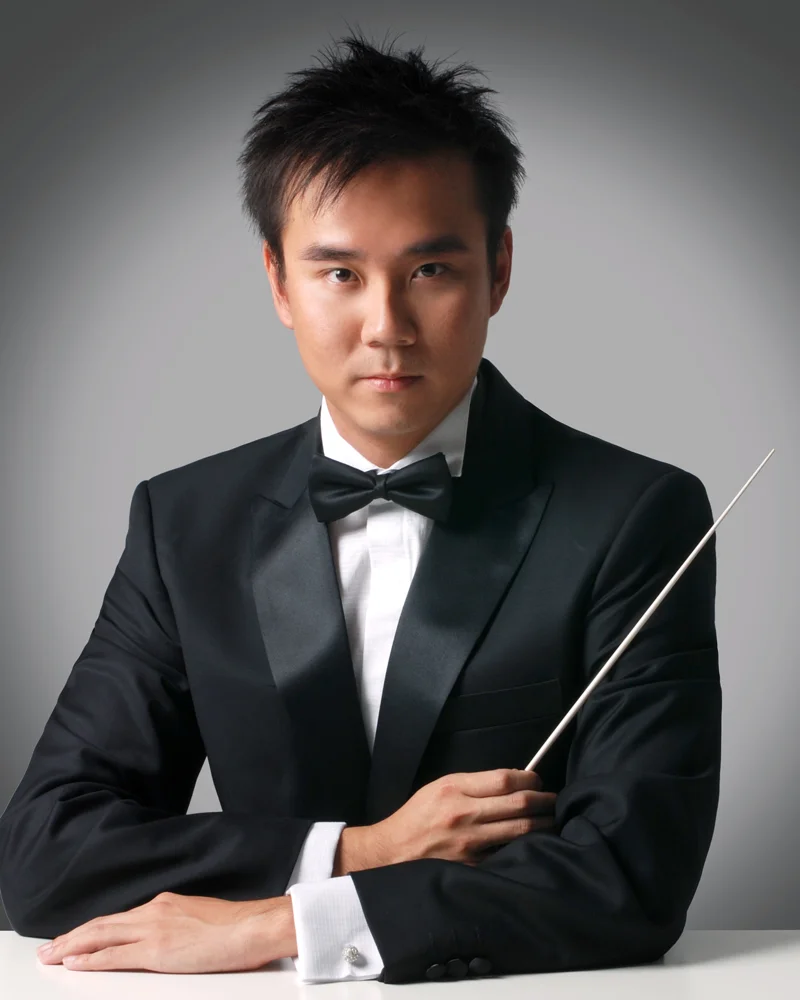New England Philharmonic program offers a fresh vision of familiar vistas
The New England Philharmonic offered a typically bracing program on the theme of New England at Boston University’s Tsai Performance Center on Sunday afternoon. In its exploration of local landscapes and composers, the program cast the familiar in a new light.
In Sunday’s program, “New Music New England,” music director Tianhui Ng sought to celebrate the “musical riches” of the area as a hub for compositional innovation and musical history. With the understandable exception of Charles Ives, all of the composers featured on the program were present for the performances of their work and the audience had the pleasure of hearing their remarks in advance of each piece. In addition to Ng’s accessible and generous commentary, this made a challenging program lucid and intriguing.
The program opened with Wang Lu’s Surge—a piece that considered the various connotations of the word “surge” in a world facing new, and often terrifying, surges in disease, storms, and population. In her remarks, Lu described the piece as a concerto for orchestra, with the various lines of brass, strings, and winds rising against one another creating, crashing together to create an ambiguous vision of both negative and positive energy.
In their performance of Lu’s piece, and in general, the ensemble cohered well in the face of difficult repertoire. Ng’s direction was sure and clear, as he helped the ensemble navigate the complex rhythmic and thematic nature of the pieces. While there were occasional issues of intonation and ensemble cohesion, the orchestra’s wide dynamic range and enthusiasm were evident in the performance. The acoustic of the Tsai Performance Center suited the contemporary program well, allowing the listener to separate the various interventions and dissonances into their component parts.
Ives’ Three Places in New England followed and provided a strong contrast to the furor of Lu’s offering. The subtle texture from the strings in the first movement, “The St. Gaudens in Boston Common’” seemed the murmurs and whispers of half-remembered songs in people, as the orchestra grounded the audience in local history. The famous “Putnam’s Camp, Redding, Connecticut” showed the ensemble’s power in the arresting opening chords, while the clarity and persistence of the overlapping tunes defamiliarized the deeply familiar Americana embedded in the piece. The final movement—“The Housatonic at Stockbridge,” however, was the highlight of the piece. Here, Ng’s gentle direction made it seem that Ives’ hymns were emerging from the river itself—a familiar feeling to many Bostonians who have spent time at Tanglewood.
The two pieces that followed, Thy Book of Toil, by David Sanford, and Perpetual Summer by Kat Agócs, continued this process of making the familiar strange in different contexts. In its meditation on New England’s famous college campuses, Sanford’s work made explicit the seeming contradiction between the peace of these idyllic places and the intensity, anxiety, and playfulness that also characterize their activities. The rapid transitions between the languid opening and the rapid motions and playful pizzicati at the piece’s center captured the New England university experience.
Perpetual Summer takes as its subject Vivaldi’s “Summer” from The Four Seasons. Agócs’ work is a meditation on the idea that climate change brings us closer to a world in which a perpetual summer—and the chaos that will cause for every element of our world—is more likely. Treating the famous theme as a “found object,” the Vivaldi quotation emerges in the middle of the work, encouraging the audience to meditate on what it might be like to have too much of a good thing.
The final piece of the program was John Harbison’s What Do We Make of Bach?, featuring organist Paul Jacobs. Harbison described the piece—which shares its name with a collection of essays on Bach authored by Harbison—as an “overture” to a work that summarizes the different encounters with Bach that shape us, rather than attempting to convey any sort of definitive assessment of the composer’s importance.
Jacobs as organist took the role of the main thinker of the piece, as the organ presented different musical ideas to the orchestra and played with their responses. The work contained many gestures towards our different encounters with Bach—suggestions of fugues and chorales, fantasies and cantatas. Jacobs’ performance embodied the interplay between Bach’s earnestness and spirit, intensity and lightness as he moved seamlessly and with perfect confidence through the work.
Jacobs’ encore—Bach’s Fugue in D Major, BWV 532—was a perfect coda to a program that confronted the audience with local associations through strange eyes. Jacob’s virtuosic performance, following Harbison’s extended meditation on the great master, allowed us to experience Bach with different ears.
The New England Philharmonic presents Sven-David Sandström’s Messiah 3 p.m. April 28 at Jordan Hall. nephilharmonic.org
Posted in Performances
